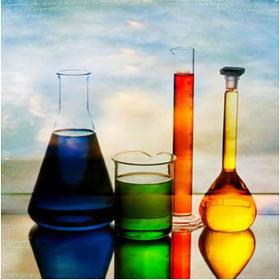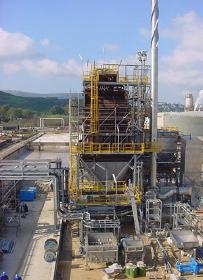- europages
- >
- COMPANIES - SUPPLIERS - SERVICE PROVIDERS
- >
- organic compounds
Results for
Organic compounds - Import export

STOOPEN & MEEÛS
Belgium
candy, spices, herbs, ... FOODCOLOURS A dye is a substance that needs a certain affinity with the carrier on which it is being applied. Hence a bond is created and the colouring capacity emerges. Contrary to a pigment, a dye is a dissolvable colorant and the colouring capacity will only show when dissolved. Dyes always have an organic compound. For more than 5000 years, natural resources have been the base for dyes. Leafs, roots and berries are just some of the components. Nowadays, most of these components have been replaced by synthetic variants. Of course, special dyes are applied when considering nutrition. (E100-199) Some dyes can be transformed in pigments by applying iron salt in a solution. This will cause the formation of the pigment. However, pigments won in this way are often little UV-resistant. What are dyes? There exists a great number of dyes for a great number of applications. Dyes are usually categorised based on their properties. (e.g.
Request for a quote
STOOPEN & MEEÛS
Belgium
detergents, ... WATER-SOLUBLE DYES A dye is a substance that needs a certain affinity with the carrier on which it is being applied. Hence a bond is created and the colouring capacity emerges. Contrary to a pigment, a dye is a dissolvable colorant and the colouring capacity will only show when dissolved. Dyes always have an organic compound. For more than 5000 years, natural resources have been the base for dyes. Leafs, roots and berries are just some of the components. Nowadays, most of these components have been replaced by synthetic variants. Of course, special dyes are applied when considering nutrition. (E100-199) Some dyes can be transformed in pigments by applying iron salt in a solution. This will cause the formation of the pigment. However, pigments won in this way are often little UV-resistant. What are dyes? There exists a great number of dyes for a great number of applications. Dyes are usually categorised based on their properties. (e.g.
Request for a quote
STOOPEN & MEEÛS
Belgium
petroleumbased products, candles, ... SOLVENT DYES A dye is a substance that needs a certain affinity with the carrier on which it is being applied. Hence a bond is created and the colouring capacity emerges. Contrary to a pigment, a dye is a dissolvable colorant and the colouring capacity will only show when dissolved. Dyes always have an organic compound. For more than 5000 years, natural resources have been the base for dyes. Leafs, roots and berries are just some of the components. Nowadays, most of these components have been replaced by synthetic variants. Of course, special dyes are applied when considering nutrition. (E100-199) Some dyes can be transformed in pigments by applying iron salt in a solution. This will cause the formation of the pigment. However, pigments won in this way are often little UV-resistant. What are dyes? There exists a great number of dyes for a great number of applications. Dyes are usually categorised based on their properties. (e.g.
Request for a quote
STOOPEN & MEEÛS
Belgium
staining, polishing, varnishing,... NATURAL OXIDES: yellow, red, brown, black STAIN, COLOURED STAIN SYNTHETIC IRON OXIDES: yellow, red, brown, black CHROME OXIDE GREEN COBALT OXIDE: green, blue ULTRAMARINE: blue, violet CARBON- or PITCH-BLACK TITANIUMDIOXIDE WHITE LEAD CHROMATE : yellow, orange WATER-SOLUBLE DYES: acid and basic A dye is a substance that needs a certain affinity with the carrier on which it is being applied. Hence a bond is created and the colouring capacity emerges. Contrary to a pigment, a dye is a dissolvable colorant and the colouring capacity will only show when dissolved. Dyes always have an organic compound. For more than 5000 years, natural resources have been the base for dyes. Leafs, roots and berries are just some of the components. Nowadays, most of these components have been replaced by synthetic variants. Of course, special dyes are applied when considering nutrition.
Request for a quote
EUROPEM
Belgium
A fluidised bed incinerator is the technology of choice for the combustion of many sludge streams or solid waste streams with a high moisture content. In a fluidised bed reactor, an inert material, typically calibrated quartz sand, is fluidised by blowing air through the bed. The sand bed expands and provides an ideal medium for the mixing of waste with combustion air. Because the fluidised bed is maintained at an elevated temperature, typically between 650°C and 800°C the water evaporates and volatile organic compounds mix with combustion air whilst escaping from the fluidised bed. EUROPEM fluidised bed reactors are bubbling fluidised beds with high turbulence. Different feeding systems can be supplied ranging from feeding screws and over spreader stokers to injection lances. Key Features Turbulent bubbling fluidized bed of inert material Different feeding systems for solid waste, waste liquids and waste gases Can be operated in a reducing or oxidising environment Key Advantages - Robust and flexible design to burn sludge or solid waste with high moisture content – Stable combustion process of waste with varying moisture content over time – Proven technology – Destruction efficiency over 99.99% and less than 1% carbon in the ashes – Low NOx and CO emissions possible – Flue gas treatment train needed to meet acid, heavy metal, dust and PCDD/F emission levels
Request for a quoteDo you sell or make similar products?
Sign up to europages and have your products listed

KURARAY (EVAL EUROPE N.V.)
Belgium
Barrier geosynthetic liners, or geomembranes, provide a protective layer in landfill, agricultural and industrial sites. The goal is to keep chemicals such as VOCs (volatile organic compounds) and greenhouse gases from diffusing out of stored materials and contaminate the surrounding environment. Adding EVALâ„¢ barrier performance to existing geomembrane designs greatly improves the performance of geomembranes to better protect soil, water and air quality. A cost-effective alternative to expensive remediation of contaminated sites. + Protecting the environment + EVAL barrier against VOCs + EVAL barrier against hydrocarbon VOCs + EVAL barrier against greenhouse gases
Results for
Organic compounds - Import exportNumber of results
7 ProductsCountries